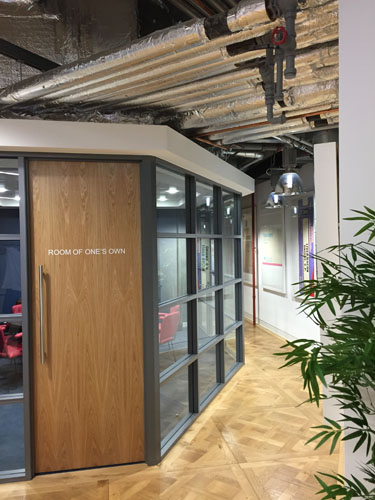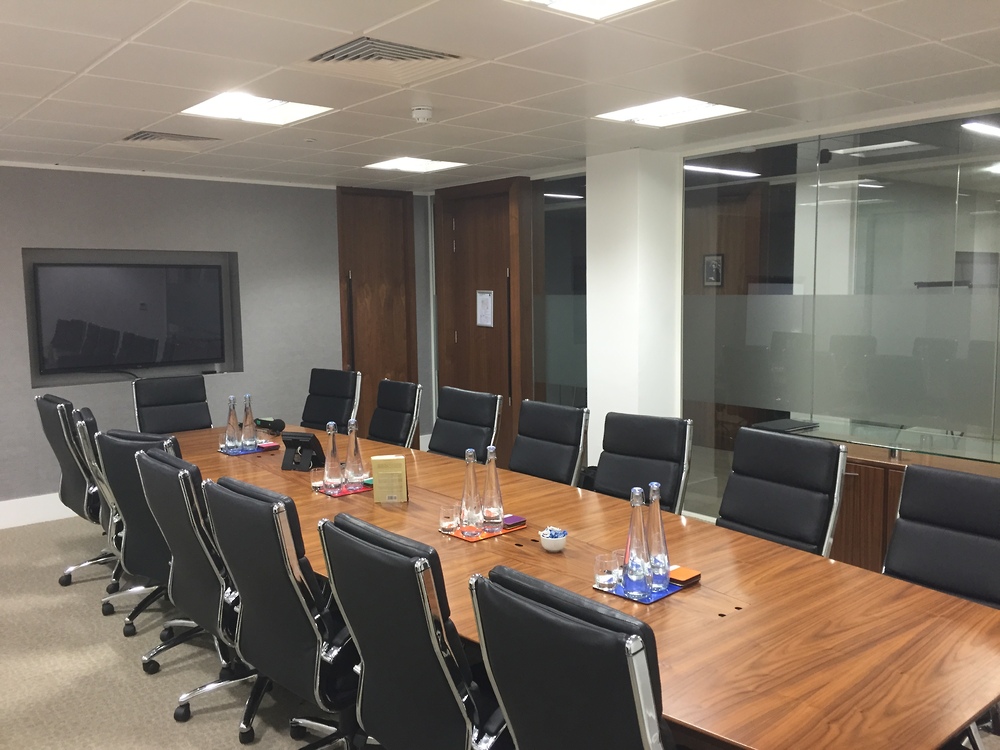- Building Acoustics
- Industrial Noise
- Vibration in Buildings
- Vibration in Pipework
- Planning, Permitting & Sustainability
- Pulsation Analysis
- Surge Analysis
- Measurement & Testing
- Services to Consultants
The Challenge for the Office Acoustic Consultant: Wanted vs Unwanted Speech
28 February 2019 by James Ward, Senior Consultant
Spectrum routinely act as an Office Acoustic Consultant; either providing valuable input early in the design stage, or diagnostic testing and remediation advice for existing problematic offices.
The acoustic design is critical to the success of an office. The working environment needs to be quiet enough to maintain adequate levels of concentration. However it can’t be so quiet that acoustic privacy issues arise with unwanted speech becoming intelligible and distracting. Sound can leak through doors and over partitions.
A balance needs to be found between the sound insulation of separating partitions, noise levels from mechanical services and noise intrusion through external façades. As an office Acoustic Consultant, Spectrum proposes suitable acoustic criteria for a wide range of potential issues, drawing guidance from British Standards (and BREEAM requirements) and provide detailed design recommendations for meeting these acoustic standards.
Perhaps the most critical aspect to be considered by the Office Acoustic Consultant is to ensure that the intelligibility of speech is appropriate for the situation; this is the balance between Wanted vs Unwanted Speech. Understanding another person speaking in the same area can be essential; however just as often there are situations when you need the complete opposite to maintain speech or acoustic privacy. These two issues are often interlinked for example where you have a meeting room (requiring good internal speech intelligibility) which then adjoins a private office. Both of these spaces of course require privacy from each other so that confidential conversations can take place without sound leaking to the other room.
Sound Leakage and Speech Privacy
This is a common situation experienced in the many projects Spectrum have undertaken for Peldon Rose, the leading office design and fit-out specialist.
Office fit-outs in existing buildings regularly present challenges which exacerbate the acoustic issues. The underlying building fabric is often unknown and out of the designer’s control, and usually protected under the Landlord’s terms.
The example in the photograph shows the typical challenge faced with landlord’s services impacting on the tenant’s fit-out. The aptly named “room of one’s own” has the potential to be anything but that with occupants of adjacent offices and circulation areas potentially hearing everything said in this room.

The challenge to Spectrum acting as the Office Acoustic Consultant, was to design and specify the right details and materials to ensure the client’s expectations on privacy would be maintained.
The solution was to install a ‘solid acoustic lid’ to the room with acoustic access hatches to the services. A lower sound absorptive ceiling was then installed for reverberation control and to improve local speech intelligibility especially when using conferencing equipment.
Conference and Meeting Room Acoustics
Understanding what is being said can be difficult for listeners sat at the far end of a large conference table or for participants dialling into a conference call. High noise levels from cooling fans on digital projectors doesn’t help. Participants often have to raise their voices to make themselves clearly understood in a large meeting. This is neither comfortable nor sustainable for any length of time. Also higher sound levels means more sound leakage out of the room and loss of acoustic privacy.
This picture shows one of Office Space In Town’s many boutique London facilities for which Spectrum has acted as Office Acoustic Consultant, and is a good example of how to get conference room acoustics right. Glazed partitions are very common and favoured from an aesthetic point of view, but acoustically they offer challenges and may create excessive reverberation and conditions for poor speech intelligibility. Here, a thick carpet and Class A sound absorptive ceiling helped to reduce reverberation. If there is a need to use conferencing equipment, the long rectangular table with reflective wall surfaces either side still means that participants positioned far away from a single conference mic may be unable to be understood by participants who have dialled in. Conference Expansion Microphones are a simple solution to this problem. The main speaker unit is located centrally and two CEMs are located at each end of the table so that all everyone round the table can contribute equally without some having to raise their voices. A simple solution. Leading conferencing equipment provider Polycom, offer such systems with CEMs.
Further information on office acoustics





